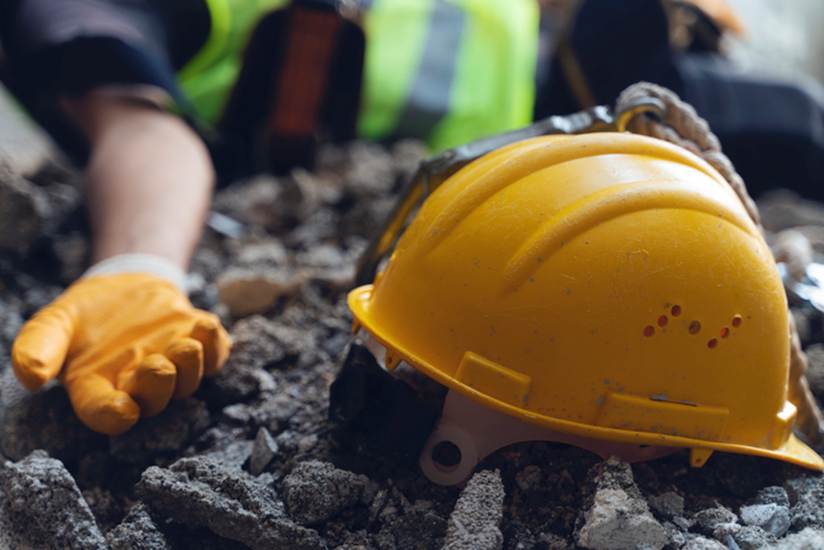
Construction Site Negligence: Holding Companies Accountable
Profit Over People: Don't Let Companies Gamble With Your Safety
After a construction accident, you’re worried, confused, and exhausted. You want answers fast. Could this have been prevented? In most cases, yes. Someone skipped a step, ignored a rule, or cut a corner. That’s not on you. Construction accident attorneys can help you see whether negligence played a role and what steps you can take next.
At Horn Wright, LLP, we understand the pressure you’re under and the questions racing through your mind. We’ve seen how corporations push speed over safety, and we know how to push back. Laws share the same core negligence principles across New York, Maine, New Hampshire, and Vermont, yet time limits and available damages can differ in each state. If someone gambled with your safety, we’ll work to lift that stress off your shoulders and pursue the compensation you deserve.

Profit Over People: When Companies Gamble With Your Safety
Your employer should protect you. Period. When deadlines loom and budgets shrink, some decision-makers treat safety like an optional add-on. Corners get cut. Training stalls. Equipment breaks and stays broken. That’s when people get hurt.
These injuries don’t happen out of nowhere. That loose guardrail, the unchecked fall risk from unsafe poor site lighting, a cracked ladder, or missing PPE, each comes from a choice someone made to save time or money.
You’ve likely seen the pattern: you’re pushed to move faster with less oversight and fewer resources. Production ramps up. Safety slows down. Stress skyrockets.
Why does it keep happening? Training costs money. Inspections take time. Following rules can delay a schedule. When profit leads, protections lag, and preventable injuries follow.
The Ugly Truth About ‘Accidents’ That Could Have Been Prevented
Most job-site injuries aren’t random. They happen because people in charge failed to do what basic safety requires. That’s negligence, and it’s avoidable.
Here are red flags you might recognize on your site:
- Ignoring mandatory OSHA regulations
- Skipping equipment and procedure training
- Leaving scaffolding unstable or unsecured
- Allowing debris and hazards to pile up
- Withholding proper protective gear
- Pushing long shifts without adequate rest
Those choices create predictable harm including broken bones, head injuries, burns, and long-term disability. None of that is “just bad luck.” The same risks can also spill beyond the fence line and trigger serious construction zone accidents that endanger passersby.
Finger-Pointing Won’t Save Them: Here’s Who Can Be Held Liable
After you’re hurt, companies may rush to blame you. They might call it an “unfortunate incident” or claim you weren’t careful enough. Don’t fall for it.
Responsibility on a construction site is shared. Several parties can be on the hook at once, depending on what went wrong:
- General contractors – Oversee site-wide safety protocols
- Subcontractors – Control specific tasks, teams, and equipment
- Property owners – Must maintain safe premises
- Site managers – Make daily calls that affect risk
- Equipment suppliers/manufacturers – Answer for defective gear
Finger-pointing doesn’t erase duty. Under principles of vicarious liability, multiple entities can be held accountable when their decisions, supervision, or contracts contribute to your injury.
Proving Negligence: Exposing the Paper Trail They Don’t Want You to See
Right after an incident, the cleanup begins and not just the debris. Reports “go missing.” Hazards get fixed overnight. Supervisors lean on coworkers to keep quiet. You’ve seen it.
But documents tell a stubborn truth.
The records that matter include safety logs, OSHA citations and violations, inspection reports, training rosters and certifications, and internal emails and memos.
These files reveal warnings ignored, hazards flagged but never fixed, and training that didn’t happen. Some hazards like lingering wet floor conditions get “resolved” only after someone is already hurt, which is why preserving evidence quickly matters. Construction accident attorneys often rely on this paper trail and expert analysis to piece together how your injury happened, which is one reason some cases take longer to resolve.
Your Right to More Than Just a Paycheck
Workers’ comp helps with medical bills and part of your lost wages. That’s useful, but it’s not the whole story. Pain, stress, and life changes don’t fit neatly into a paycheck.
If negligence caused your injury, you may also have a separate personal injury claim that lets you seek broader damages, including:
- Pain and suffering
- Emotional distress
- Long-term disability impacts
- Loss of future earning capacity
- Loss of enjoyment of life
Don’t let anyone tell you to “just take the comp and move on.” Your recovery isn’t just about income. It’s about time, independence, and dignity. When a life is lost, families may pursue a wrongful death claim to cover funeral costs, replace lost financial support, and recognize the emotional devastation left behind.
How Negligent Employers Are Cornered and Held Accountable
Accountability doesn’t appear by itself. It’s earned through evidence. Strong cases show what happened, why it was unsafe, and who made the choices that put you at risk.
That process looks like this: examine site conditions, interview witnesses, review written safety rules (if they exist), and bring in independent safety experts. Send preservation letters so key records can’t “vanish.” Line up the facts. Connect them to the duties each party owed you.
Once the proof stacks up, pressure mounts. Corporate defendants that once seemed unreachable start responding. Many fair outcomes only arrive after insurers face the risk of trial, especially given how insurance companies exploit personal injury victims.
Don’t Let Them Get Away With It: Time Is Running Out
Deadlines matter. In many states, you’ve got three years from the date of injury to file a personal injury claim, New York’s timeline appears in CPLR § 214, and claims against public entities can require even faster notice.
Waiting makes everything tougher. Witnesses relocate. Paper trails fade. Sites change. Memories blur. Understanding what happens when you sue someone can help you prepare and take action before the clock runs out.
Take Action Today: Protect Your Rights After a Construction Accident
Construction site negligence can completely disrupt life in a matter of seconds. Medical bills pile up. Hours disappear from your paycheck. Sleep becomes restless. Construction accident attorneys can walk you through your options and help protect what’s ahead. If you or someone you love was hurt on a site, don’t wait. Contact Horn Wright, LLP, today to connect with experienced attorneys who will fight to protect your rights and pursue the compensation you deserve.

What Sets Us Apart From The Rest?
Horn Wright, LLP is here to help you get the results you need with a team you can trust.
-
Client-Focused ApproachWe’re a client-centered, results-oriented firm. When you work with us, you can have confidence we’ll put your best interests at the forefront of your case – it’s that simple.
-
Creative & Innovative Solutions
No two cases are the same, and neither are their solutions. Our attorneys provide creative points of view to yield exemplary results.
-
Experienced Attorneys
We have a team of trusted and respected attorneys to ensure your case is matched with the best attorney possible.
-
Driven By Justice
The core of our legal practice is our commitment to obtaining justice for those who have been wronged and need a powerful voice.

